As HR professionals, it is crucial to understand the significance of team building in a corporate setting. In today’s fast-paced business environment, organizations face new and increasing demands for results. Teams are often the key to achieving these results, but they can also be the source of many unnecessary conflicts. A well-structured team-building program can help HR professionals to identify and address these problems, ultimately leading to a more effective and efficient workforce.
One of the primary benefits of team building is improved communication. Team building activities help individuals to understand one another’s communication styles and to learn how to work together more effectively. Improved communication leads to increased trust, better collaboration, and increased productivity.
Another benefit of team building is increased motivation. When team members feel connected to one another, they are more likely to be motivated to work together to achieve their goals. A well-structured team-building program can allow team members to share their goals, values, and aspirations, leading to a deeper commitment to the team and its goals.
Effective team building also helps to address conflicts within teams. Conflicts can arise for a variety of reasons, including personality clashes, competing priorities, or simply a lack of understanding of one another’s roles and responsibilities. Team building activities can provide a safe and controlled environment for team members to discuss these conflicts and work towards resolving them. This not only improves the overall functioning of the team but also helps to improve the working relationships between team members.
Below are three team-building exercises that you can start using immediately.
Effective Team Building Exercises
Trust-Building
Trust-building exercises are designed to help team members build trust and establish relationships with one another. A simple example of a trust-building exercise is a “blindfolded obstacle course”. In this exercise, team members are blindfolded and have to rely on verbal instructions from their teammates to navigate through an obstacle course.
To conduct this exercise, divide the team into pairs, with one member blindfolded and the other acting as the guide. Set up an obstacle course in a safe and controlled environment, such as a conference room or gymnasium. The guide must give clear and concise instructions to the blindfolded member to help them navigate the course.
This exercise helps to build trust between team members by encouraging them to rely on one another. It also helps to improve communication skills, as the guide must give clear and concise instructions for their partner to follow.
Problem-Solving
Problem-solving exercises are designed to help team members work together to solve complex problems. A simple example of a problem-solving exercise is an “escape room”. In this exercise, team members are locked in a room and have to work together to solve a series of puzzles and find their way out.
To conduct this exercise, divide the team into groups of 4-6 and book a private escape room. Ensure that each group is given a unique set of puzzles to solve. The teams must work together to solve the puzzles and find their way out of the room within a set time limit.
This exercise helps to improve teamwork, communication, and problem-solving skills. It also helps to build trust and establish relationships between team members, as they must work together to find a solution.
Communication
Communication exercises are designed to help team members improve their communication skills and understand one another’s communication styles. A simple example of a communication exercise is “telephone”. In this exercise, team members are divided into groups of 4-6 and given a message to pass down the line.
To conduct this exercise, give the first person in each group a message and ask them to whisper it into the ear of the person next to them. The message must be passed down the line until it reaches the last person. The last person must then say the message out loud.
This exercise helps to improve communication skills, as team members must listen carefully and accurately relay the message to their partner. It also helps to highlight any communication barriers or misunderstandings that may exist within the team, allowing HR professionals to address these issues.
These team-building exercises are helpful because they provide an opportunity for team members to work together in a fun and relaxed environment, away from the pressure of the workplace. They help to build trust, establish relationships and improve communication skills, ultimately leading to a more effective and efficient team.
The DISC Profile and Team Building
Understanding the different personality types within teams, such as those identified through the DISC Profile, can also help to create a more tailored and effective team-building program.
One popular tool for understanding personality types is the DISC Profile. The DISC Profile categorizes individuals into four basic personality types: Dominant, Influencer, Steady and Conscientious.
Dominant individuals are confident, assertive and results-oriented. They are typically very direct in their communication style and enjoy taking charge of situations. They are often the decision-makers within a team.
Influencer individuals are outgoing, enthusiastic and enjoy working with others. They are great at motivating and inspiring others and are often seen as the “people person” within a team.
Steady individuals are reliable, supportive, and steady in their approach. They are often seen as the “glue” that holds a team together, providing stability and continuity.
Conscientious individuals are detail-oriented, accurate, and analytical. They are often the “quality control” within a team, ensuring that tasks are completed to a high standard.
By understanding these different personality types, HR professionals can tailor their team-building programs to take into account the strengths and weaknesses of each individual. This helps to create a more harmonious and effective team dynamic.
Get building!
Team building is an essential component of effective HR management. By improving communication, increasing motivation, and addressing conflicts, HR professionals can create a more effective and efficient workforce.


